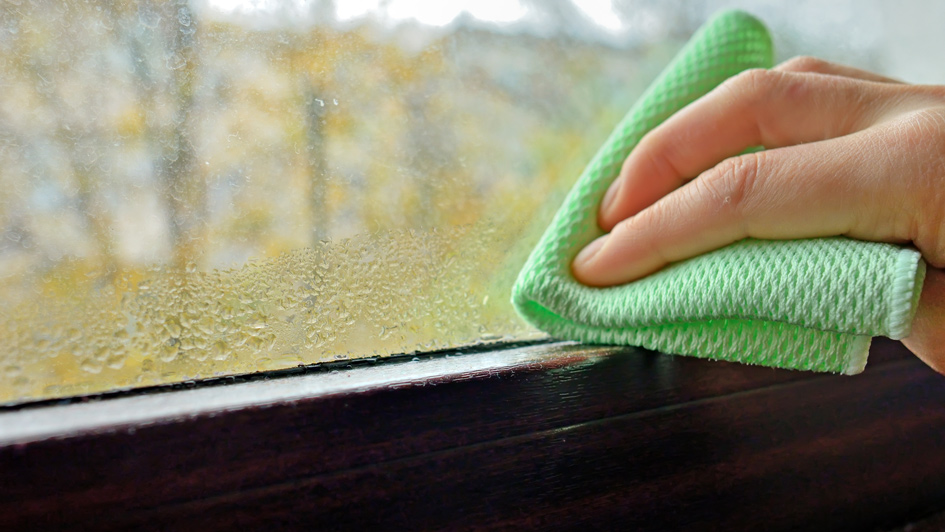
The windows in your home are a gateway to the outdoors, a way to allow light in as you take in the view of your garden, yard or landscape. The last thing you need to see is a sweaty window covered in a coating of condensation.
Not only are windows plastered with condensation unappealing, they also can be a symptom of a more serious air-quality issue in your home. Luckily, there’s several things you can do to resolve the problem.
What Causes Sweating along Windows
Condensation on the interior of windows is produced by the humid warm air inside your home hitting the cold surface of your windows. It’s notably commonplace around the winter when it’s much cooler outside than it is inside your home.
Inside Moisture vs. In Between Panes
When dealing with condensation, it’s important to know the distinction between moisture on the inside of your windows compared to moisture in between the windowpanes. One is an indoor air quality issue and the other is a window issue.
- Moisture inside a window is created from the warm damp air inside your home collecting against the glass.
- The moisture you notice between windowpanes is produced when the window seal fails and moisture slips between the two panes of glass, and at that point the window has to be repaired or replaced.
- Condensation in the windows isn’t a window problem and can instead be fixed by adjusting the humidity inside your home. Numerous things cause humidity in a home, like showers, cooking, laundry or even breathing.
Why Sweating Windows Can Be Trouble
Though you might presume condensation in your windows is a cosmetic issue, it may also be a sign your home has higher humidity. If that’s the case, water might also be condensing on window frames, cold walls or other surfaces. Even a slim film of water can cause wood surfaces to mildew or rot over time, fostering the growth of mildew or mold.
How to Decrease Humidity in Your Home
Thankfully there are numerous options for extracting moisture from the air inside your home.
If you have a humidifier running inside your home – whether it be a small-scale unit or a whole-house humidifier – lower it further so the humidity inside your home goes down.
If you don’t have a humidifier going and your home’s humidity level is high, consider getting a dehumidifier. While humidifiers adds moisture into your home so the air doesn’t get too dry, a dehumidifier pulls excess moisture out of the air.
Small, portable dehumidifiers can eliminate the water from one room. However, those units require emptying out water trays and most often service a fairly small area. A whole-house dehumidifier will eliminate moisture throughout your entire home.
Whole-house dehumidifier systems are regulated by a humidistat, which enables you to specify a humidity level just like you would select a temperature with your thermostat. The unit will begin running immediately when the humidity level surpasses the set level. These systems collaborate with your home’s HVAC system, so you will want to contact experienced professionals for whole-house dehumidifier installation Athol.
Additional Ways to Decrease Condensation on Windows
- Exhaust fans. Adding exhaust fans near humidity hotspots like the bathroom, laundry room or above the kitchen range can help by drawing the warm, humid air from these rooms out of your home before it can increase the humidity level in your home.
- Ceiling fans. Turning on ceiling fans can also keep air swirling inside the home so humid air doesn’t get stuck in one area.
- Open window treatments. Pulling open the blinds or drapes can lower condensation by stopping the damp air from being stuck against the windowpane.
By reducing humidity across your home and dispersing air throughout your home, you can take advantage of clear, moisture-free windows even in the winter.




